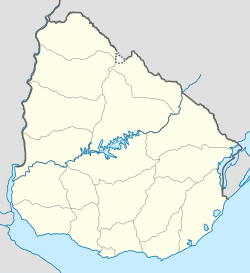Sauce | |
|---|---|
City & Municipality | |
| Coordinates: 34°39′0″S56°4′0″W / 34.65000°S 56.06667°W | |
| Country | |
| Department | |
| Founded | 1851 |
| Population (2011 Census) | |
• Total | 6,132 |
| Time zone | UTC -3 |
| Postal code | 90800 |
| Dial plan | +598 2 (+7 digits) |
You can help expand this article with text translated from the corresponding article in Spanish. (December 2020)Click [show] for important translation instructions.
|
Sauce is a small city and municipality in the Canelones Department of southern Uruguay.


